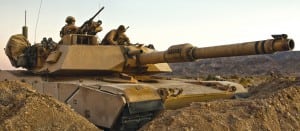
Russia has demonstrated ground combat technologies in Ukraine and Syria to which the U.S. Army is vulnerable and unable to develop countermeasures because its modernization budget has been cut to pay for near-term readiness, senior generals told lawmakers on Tuesday.“We are outranged and outgunned by many potential adversaries in the future in winning that sort of deep fight against an enemy with long-range capabilities,” Lt. Gen. H.R. McMaster said during a hearing of the Senate Armed Services subcommittee on strategic…

 By
By 








